Abstract
The prevalence of antibody against Toxoplasma gondi in a population of 715 pregnant women has been evaluated by two methods: indirect haemagglutination antibody (IHA) and indirect fluorescent antibody (IFA) test and all positive sera were checked by the dye test. Five hundred of the study population were questioned on diet and on animal contact to elucidate a possible relation to the prevalence of antibody. Results are expressed in international units (IU) of antibody against T gondi. Of the 715 sera, 171 were positive by IHA and 173 by IFA. One hundred and sixty-seven sera were positive by both tests, ninety-eight (58%) correlating exactly, as to the concentration of antibody. The ten sera which were not positive by both tests all had detectable antibody at the minimum concentration only (12 IU). The dye test confirmed all sera positive by both tests with the exception of three. It also confirmed one of four sera positive by IHA antibody alone and two of six positive by IFA alone. All sera that proved dye test-negative had low antibody concentrations (12 IU) by IHA or IFA. The IHA test, which is commercially available in kit form, would be suitable for use as a screening test during pregnancy. The estimated annual rate of antibody acquisition over the age range 16-40 years is 1.2% per annum with the highest rate in the 36-40 age group (2.5% per annum) and the lowest in the 26-30 age group (0.4% per annum). The clinical history was not significantly different between those with and those without antibody against T gondi but significantly more women in the 36-40 age group had a history of animal contact than those in the 26-30 age group. No conclusive evidence of recent or current infection was found.
Full text
PDF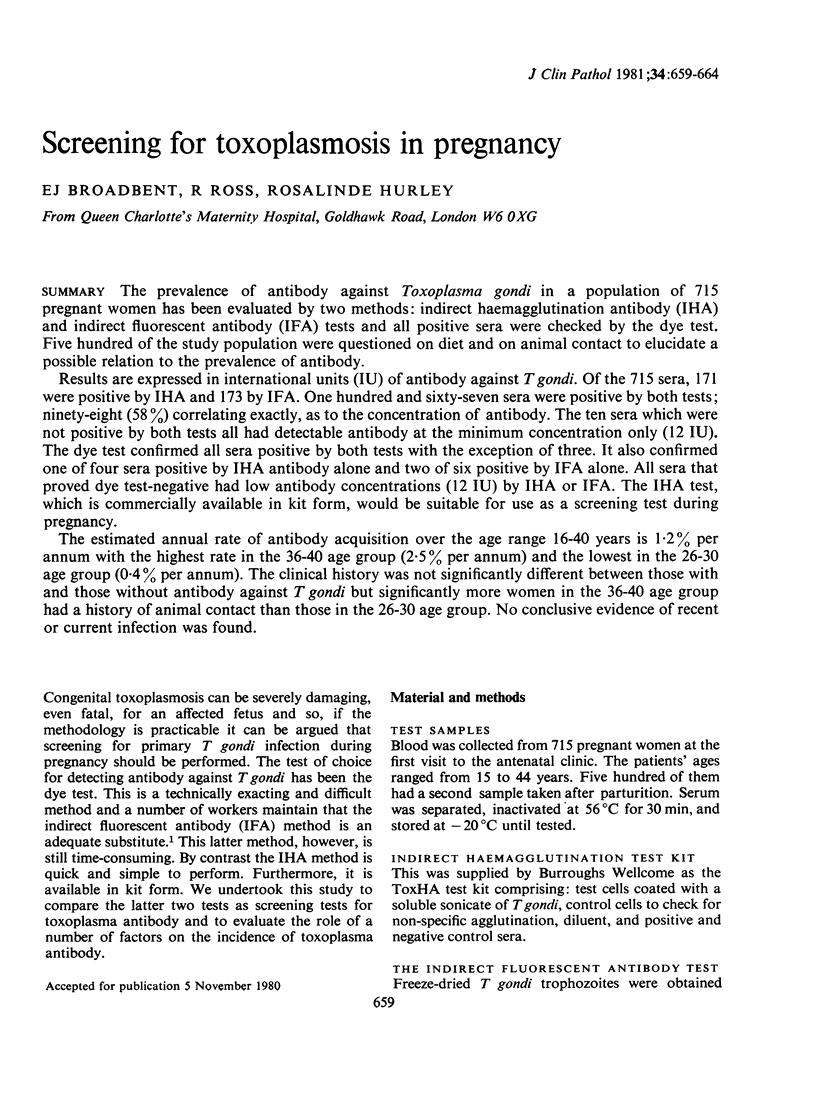
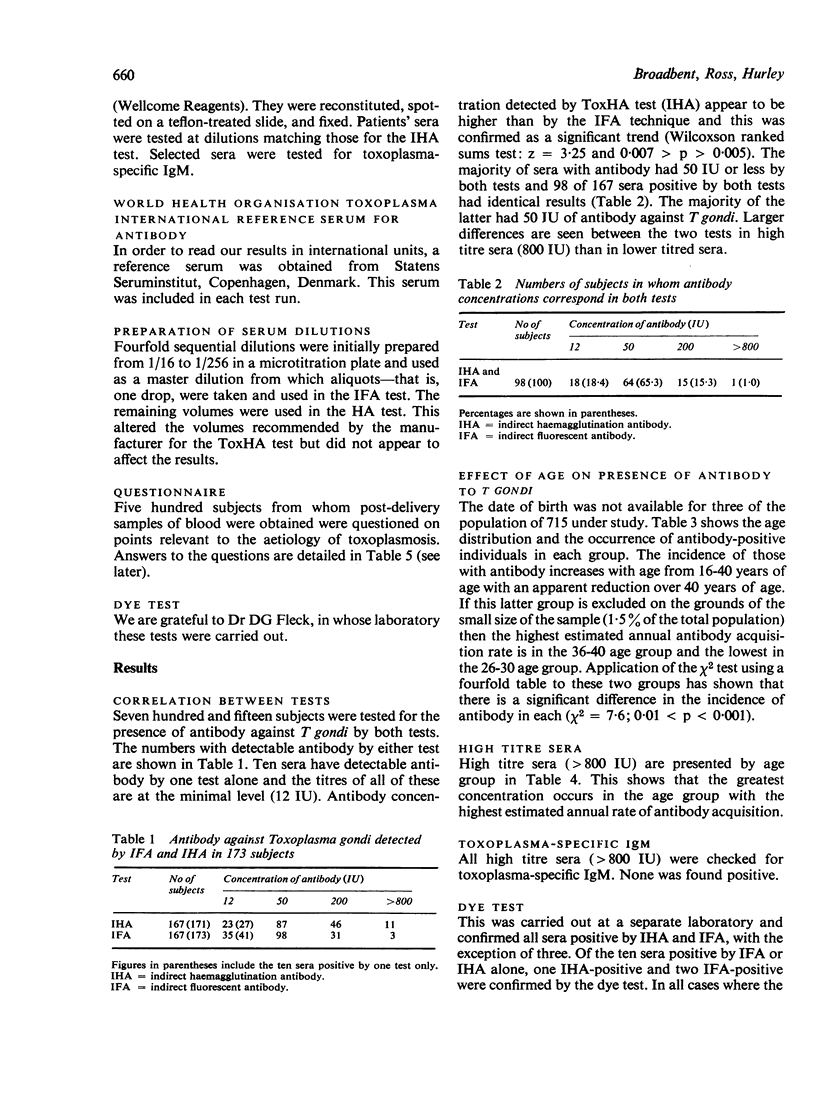
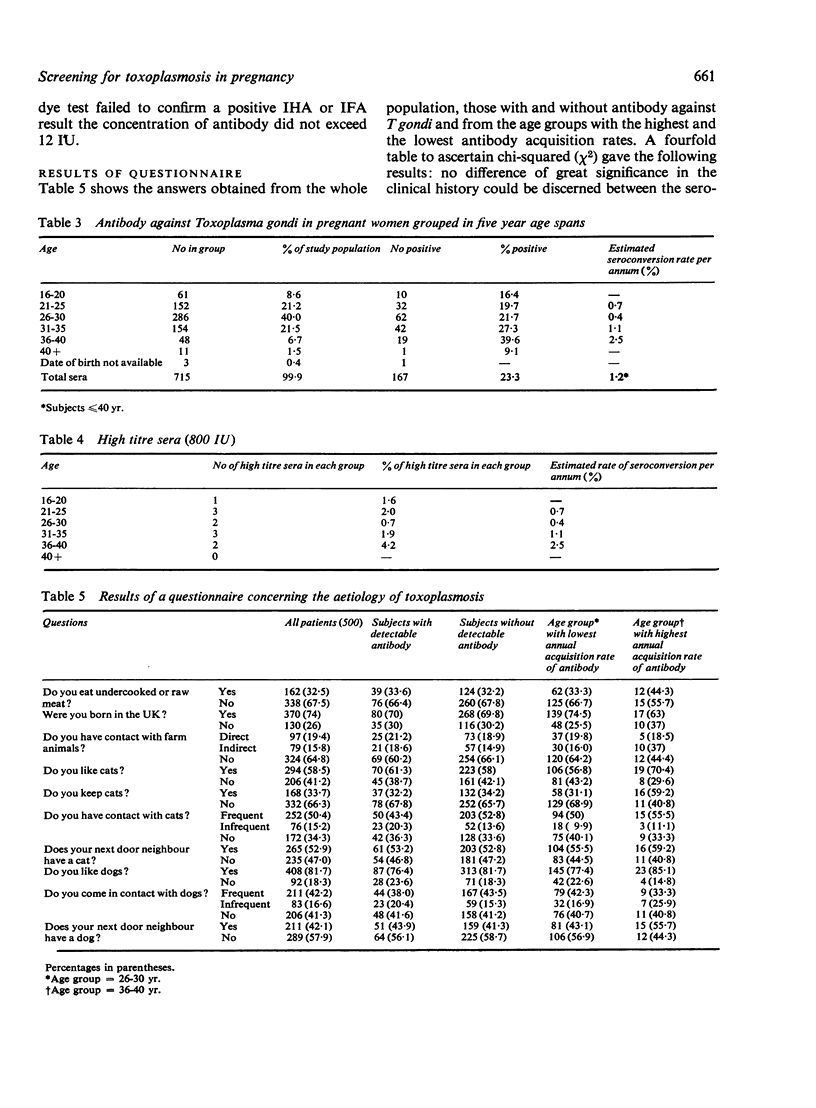
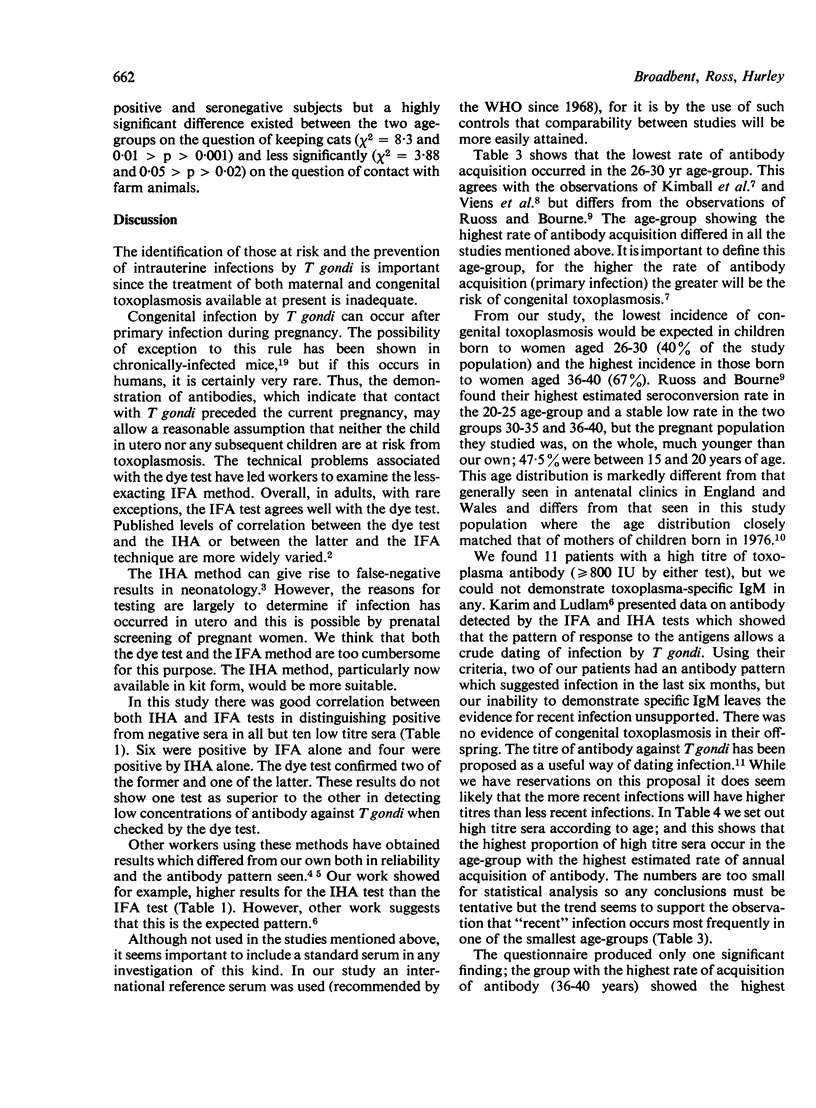
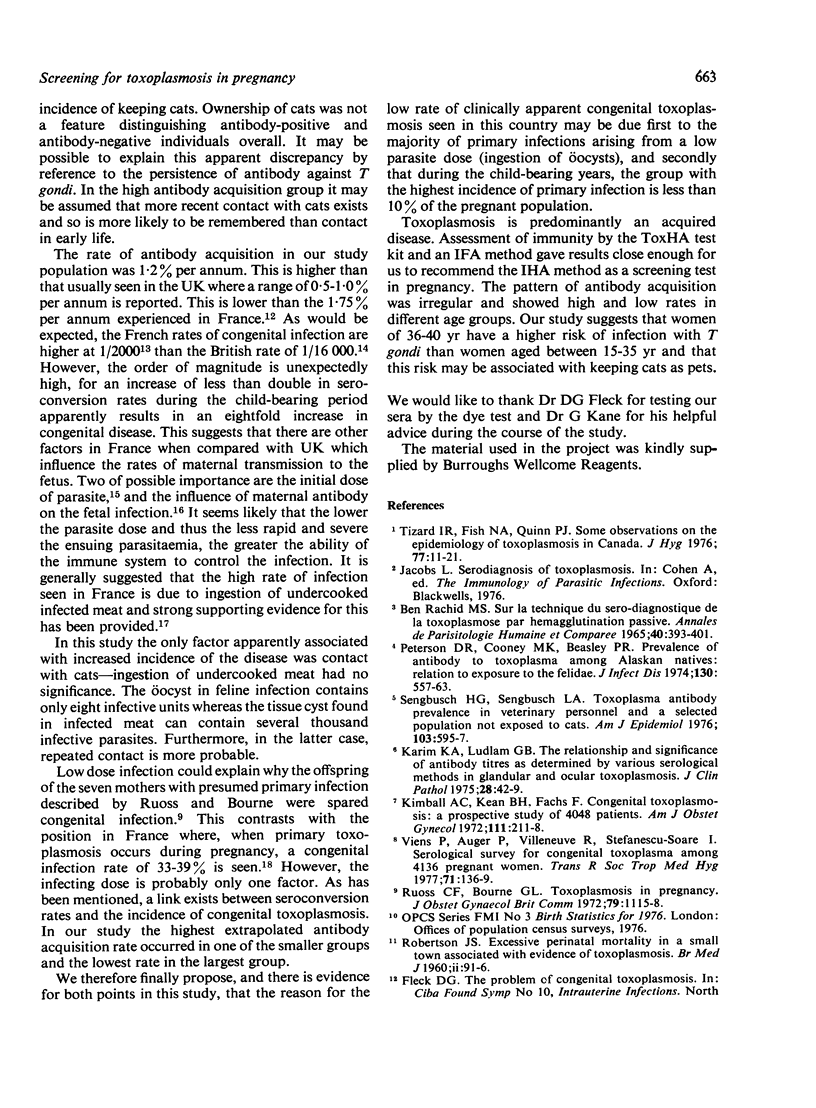

Selected References
These references are in PubMed. This may not be the complete list of references from this article.
- BEVERLEY J. K. Congenital transmission of toxoplasmosis through successive generations of mice. Nature. 1959 May 9;183(4671):1348–1349. doi: 10.1038/1831348a0. [DOI] [PubMed] [Google Scholar]
- Fleck D. G. Congenital infection due to toxoplasma. Proc R Soc Med. 1975 Jun;68(6):368–369. [PMC free article] [PubMed] [Google Scholar]
- Harris E. D., Jr, McCroskery P. A. The influence of temperature and fibril stability on degradation of cartilage collagen by rheumatoid synovial collagenase. N Engl J Med. 1974 Jan 3;290(1):1–6. doi: 10.1056/NEJM197401032900101. [DOI] [PubMed] [Google Scholar]
- JACOBS L., JONES F. E. The parasitemia in experimental toxoplasmosis. J Infect Dis. 1950 Jul-Aug;87(1):78–89. doi: 10.1093/infdis/87.1.78. [DOI] [PubMed] [Google Scholar]
- Karim K. A., Ludlam G. B. The relationship and significance of antibody titres as determined by various serological methods in glandular and ocular toxoplasmosis. J Clin Pathol. 1975 Jan;28(1):42–49. doi: 10.1136/jcp.28.1.42. [DOI] [PMC free article] [PubMed] [Google Scholar]
- Kimball A. C., Kean B. H., Fuchs F. Congenital toxoplasmosis: a prospective study of 4,048 obstetric patients. Am J Obstet Gynecol. 1971 Sep 15;111(2):211–218. doi: 10.1016/0002-9378(71)90892-1. [DOI] [PubMed] [Google Scholar]
- Peterson D. R., Cooney M. K., Beasley R. P. Prevalence of antibody to Toxoplasma among Alaskan natives: relation to exposure to the felidae. J Infect Dis. 1974 Dec;130(6):557–563. doi: 10.1093/infdis/130.6.557. [DOI] [PubMed] [Google Scholar]
- ROBERTSON J. S. Excessive perinatal mortality in a small town associated with evidence of toxoplasmosis. Br Med J. 1960 Jul 9;2(5192):91–96. doi: 10.1136/bmj.2.5192.91. [DOI] [PMC free article] [PubMed] [Google Scholar]
- Rachid M. S. Sur la technique du séro-diagnostic de la toxoplasmose par hémagglutination passive. Ann Parasitol Hum Comp. 1965 Jul-Aug;40(4):393–401. [PubMed] [Google Scholar]
- Ruoss C. F., Bourne G. L. Toxoplasmosis in pregnancy. J Obstet Gynaecol Br Commonw. 1972 Dec;79(12):1115–1118. doi: 10.1111/j.1471-0528.1972.tb11897.x. [DOI] [PubMed] [Google Scholar]
- Sengbusch H. G., Sengbusch L. A. Toxoplasma antibody prevalence in veterinary personnel and a selected population not exposed to cats. Am J Epidemiol. 1976 Jun;103(6):595–597. doi: 10.1093/oxfordjournals.aje.a112265. [DOI] [PubMed] [Google Scholar]
- Tizard I. R., Fish A., Quinn J. P. Some observations on the epidemiology of toxoplasmosis in Canada. J Hyg (Lond) 1976 Aug;77(1):11–21. doi: 10.1017/s0022172400055467. [DOI] [PMC free article] [PubMed] [Google Scholar]
- Viens P., Auger P., Villeneuve R., Stefanescu-Soare I. Serological survey for congenital toxoplasmosis among 4,136 pregnant women. Trans R Soc Trop Med Hyg. 1977;71(2):136–139. doi: 10.1016/0035-9203(77)90080-3. [DOI] [PubMed] [Google Scholar]


